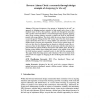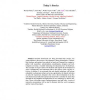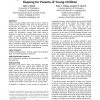COGSCI
2010
14 years 21 days ago
2010
Abecassis, Sera, Yonas, and Schwade (2001) have shown that young children represent shapes more metrically, and perhaps more holistically, than do older children and adults. How d...
NIPS
2008
14 years 2 months ago
2008
Young children demonstrate the ability to make inferences about the preferences of other agents based on their choices. However, there exists no overarching account of what childr...
EUROITV
2008
Springer
14 years 2 months ago
2008
Springer
The proliferation of audiovisual content available for young children brings with it the need for an appropriate Electronic Programme Guide (EPG) that meets needs and preferences o...
DPPI
2007
ACM
14 years 4 months ago
2007
ACM
This paper documents a first attempt at "designing for the self", an approach to designing products intended to help people move closer to their idealized sense of self a...
HUC
1999
Springer
14 years 4 months ago
1999
Springer
Research frameworks are being developed that involve very young children in the process of development of future technologies. Children, their teachers and parents from schools in ...
EDUTAINMENT
2007
Springer
14 years 6 months ago
2007
Springer
We present findings of an observational study investigating how young children interact with augmented reality story books. Children aged between 6 and 7 read and interacted with o...
TEI
2010
ACM
14 years 7 months ago
2010
ACM
This project studied the influence of kinesthetic intelligences on creativity in young children. To understand this relationship preschoolers were observed in their daycare setti...
CHI
2009
ACM
15 years 1 months ago
2009
ACM



